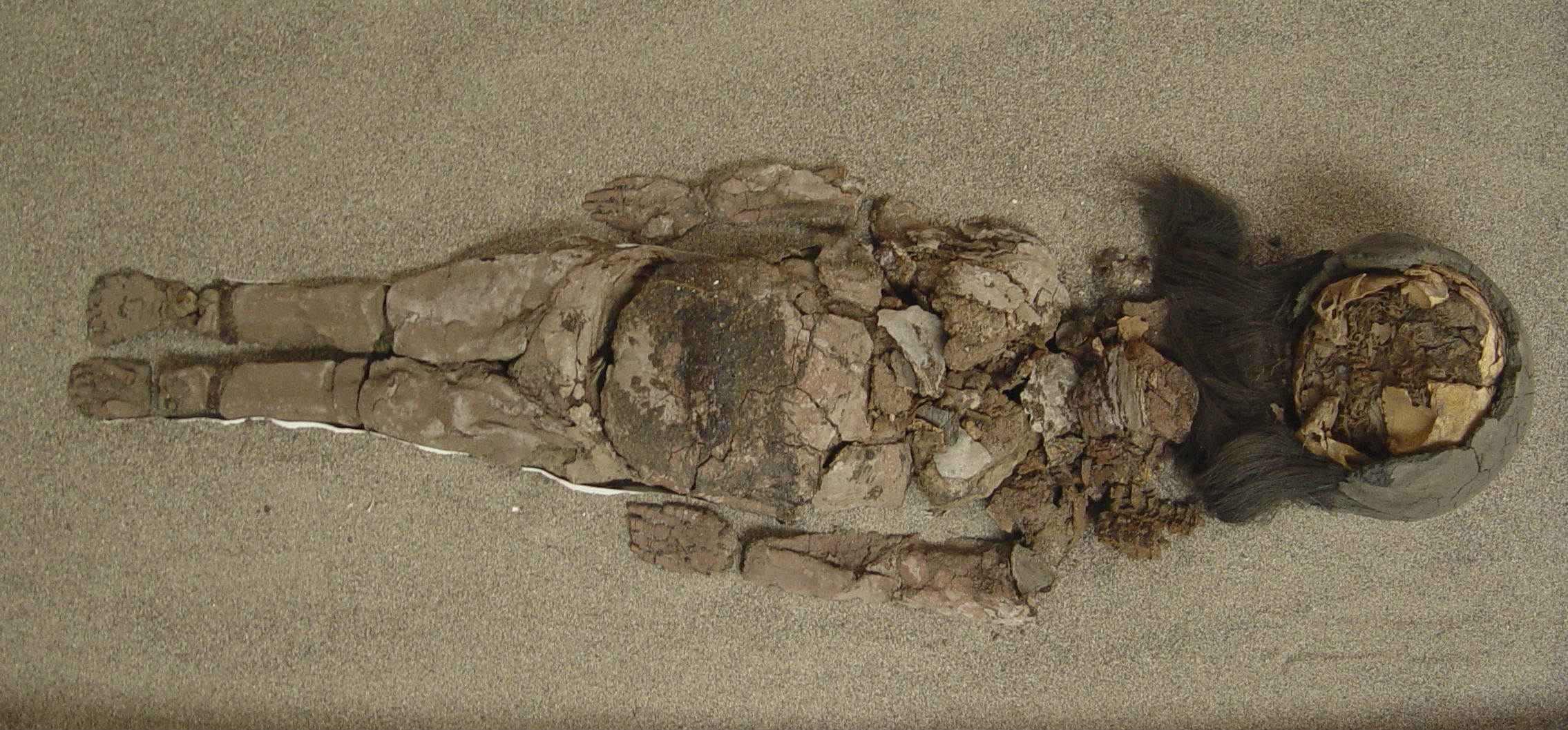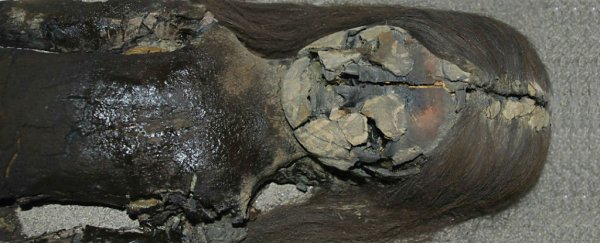A collection of mummified human remains found in northern Chile is turning into black slime due to rising humidity levels, and researchers are at a loss for how to stop it.
More than 100 of these mummies - which are at least 7,000 years old - have started to turn gelatinous, and last year local officials applied to the United Nations' cultural agency, UNESCO, to have them recognised as a world heritage site.
Of course, getting approval won't save the mummies on its own, but the researchers hope that increased attention from the international community will help them find solutions to the black goo.
The goo is thought to be the result of colonies of bacteria thriving in the mummified skin.
"The application is not a goal in itself, but the start of a process of improved conservation tools, with the Chilean state and the international community," Sergio Medina Parra, anthropologist and department head at University of Tarapaca in Chile, told Reuters back in 2016.
Since the early 1900s, almost 300 human mummies have been uncovered along the coast of southern Peru and northern Chile, including adults, children, infants, and miscarried foetuses.
With some dated to as far back as 5050 BC, these are the oldest mummies discovered in the world to date.
They were made by a group of hunter-gatherers known as the Chinchorro people, who were mummifying their dead roughly 2,000 years before the ancient Egyptians began mummifying their pharaohs.
"The dates that we have for the bodies are from 7,000 years ago … so they have more relative antiquity in terms of intentional work on the human body than that found in Egypt," says Medina Parra.
While the Egyptians reserved mummification for the elite only, the Chinchorros appeared to mummify just about anyone, old or young, suggesting that they maintained a very egalitarian society.
"Chinchorro mummies were not restricted to the dead of the top classes. This community was very democratic," Bernardo Arriaza from University of Tarapaca, who has been leading digs in the area for 30 years, told the Los Angeles Times.
 Complete Chinchorro mummy at San Miguel de Azapa Museum. (Vivien Standen)
Complete Chinchorro mummy at San Miguel de Azapa Museum. (Vivien Standen)
Arriaza suspects that contaminated drinking water in the area from nearby volcanoes could have initiated the practice of mummification, because researchers have found arsenic in the mummies' tissues.
"Arsenic poisoning can lead to a high rate of miscarriages, and infant mortality, and the sorrow over these deaths may have led this community to start preserving the little bodies," he said.
"Mummification could have started with the foetuses and grown to include adults. The oldest mummies we have found are of children."
The reason the mummies have been so incredibly preserved is that they've been buried under the dry sands of the Atacama Desert for thousands of years - where some parts of the earth haven't been touched by rain in over 400 years.
Over the past century, they've been excavated and transported to local research institutions for conservation.
Early in 2015, things started to go awry, and Chilean preservationists turned to scientists at the University of Harvard for help.
"We knew the mummies were degrading but nobody understood why," Harvard biologist Ralph Mitchell said at the time. "This kind of degradation has never been studied before."
Tissue sample analysis from the mummies revealed that they were crawling with bacteria - but it wasn't ancient bacteria, they were the kind that normally live on people's skin. And they're now speeding up the degradation process like nothing else.
"[A]s soon as the right temperature and right moisture appeared, they started to use the skin as nutrients," Mitchell told Live Science, adding that unless local researchers can keep the Chinchorros mummies under the right temperature and humidity conditions, "the native microorganisms are going to chew these guys right up".
There's no word yet on whether the application to UNESCO will be approved, but let's hope the local researchers will find the help they need to keep these mummies safe.
Because having the remains of humans that existed more than 2 millennia before the ancient Egyptians is mind-boggling, and we can't just let that be eaten away.
A version of this article was first published in November 2016.
